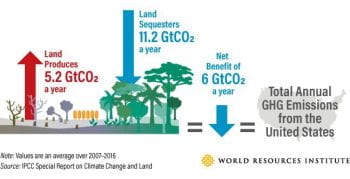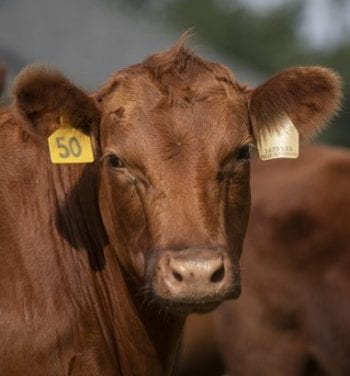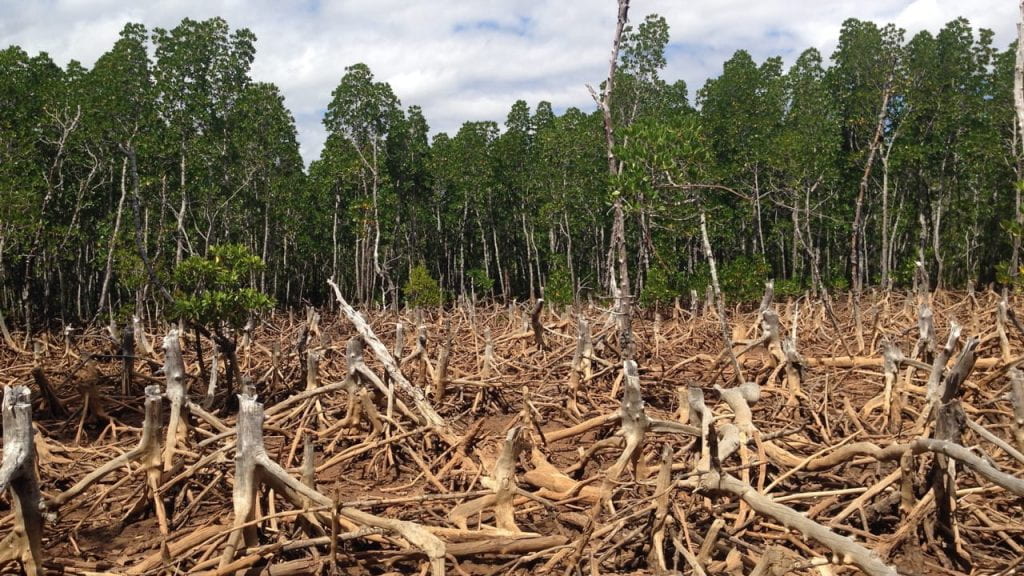In the wake of the recent UN Youth Summit, the UN Climate Action Summit, the Global Climate Strike, and the UN Climate Change Conference (COP25) happening right now in Madrid, Spain, it’s clear that climate change is on the minds of people all over the world.
When it comes to climate action, discussions tend to focus primarily on energy, industry, and transportation. But in the past few years, we’ve observed a surge of interest in the role that land can play in both mitigating and propagating the detrimental effects of global warming. But what really is the connection between land, food, and climate change?
A Recent Report by the IPCC
In August of this year, the IPCC (Intergovernmental Panel on Climate Change) released a special report titled “Climate Change and Land” that serves as a detailed summary of current scientific knowledge on the complex relationships between “climate change, desertification, land degradation, sustainable land management, food security, and greenhouse gas (GHG) fluxes in terrestrial ecosystems”. This report comes one year after the landmark 1.5ºC report warning that we have until 2030 to avoid reaching a 1.5 degree Celsius warming in global temperatures.
Focusing specifically on land use and climate change, this new report documents the growing and underestimated impact of land use on climate change, indicating that 23% of global human-caused greenhouse gas emissions come from agriculture, forestry and other land uses. Despite its contributions to GHG emissions, land still serves as one of earth’s most important carbon sinks by capturing more emissions than it generates through misuse.

Land is both a powerful sink and emitter of carbon dioxide emissions.
Climate Change and Land
The report warns that the same land that provides us our vital “food, feed, fibre, fuel and freshwater” is today under threat from rising global temperatures and “unprecedented” rates of land and freshwater exploitation.
Land surface air temperature has risen twice as much as the global average temperature since the pre-industrial period. This global warming effect has had sweeping negative impacts on terrestrial ecosystems by way of increased desertification, land degradation, erosion, biodiversity loss, and impaired ecosystem health.

Animal agriculture alone accounts for 14.5% of global GHG emissions (Food and Agriculture Organization of the UN, 2013).
On the other end, human activity directly affects more than 70% of the global ice-free land surface, which in turn impacts our climate system. Our current food system is the largest contributor to deforestation, desertification, and biodiversity loss as ‘wild’ lands are converted to croplands. Currently, 75% of deforestation around the world is due to agriculture activity, even though research shows we currently have enough farmland to feed a global population if managed sustainably.
These land changes weaken the soil’s ability to draw C02 out of the atmosphere while simultaneously increasing GHG emissions from food production, further accelerating climate change and its effects.
Climate Change and Food
In a destructive feedback loop, climate change also has dangerous consequences for global food production and food security. More frequent droughts, floods, and heatwaves will mean unstable growing conditions for many areas of the world where resilient farming infrastructure is unavailable. Additionally, as the magnitude and frequency of extreme weather events increase so will disruptions to food supply chains. Changing precipitation patterns and desertification of arable land are also predicted to trigger increases in cereal prices which can threaten global food security. The report predicts that cereal prices could increase by up to 29% by 2050, forcing upwards to 183 million additional low-income individuals to be at risk of hunger.
Climate change and rising CO2 levels are also predicted to affect the nutritional quality of our food, the report says, as well as animal growth rates, with productivity expected to decline in pastoral systems.
Land-Based Solutions to Address Climate Change
Despite painting a bleak picture, the IPCC report did highlight strategies that can be deployed and/or scaled up to feed a growing population while mitigating the effects of climate change on land. In general, strategies that can increase economic development and stability across the globe, while also reducing the demand for land conversion into cropland, are predicted to be the most effective in combating climate change.
The main strategies listed include:
- Improved management of croplands and sustainable forest management to increase CO2 sinks and restore land resilience to climate fluctuations
- Curbing deforestation and forest degradation while accelerating afforestation and reforestation efforts
- Diet changes and reduced food loss throughout the food system – especially reductions in meat consumption globally
- Enhancing mineral weathering (a process of speeding up rocks’ decomposition to increase their carbon uptake)
If deployed properly, these techniques can have positive outcomes beyond our climate system, including increased global food security and accelerated progress on targets in the Sustainable Development Goals.
This article was written by Mary Kate Cartmill, Food Associate at the Office of Sustainability.
Further Reading:
- In-depth Q&A: The IPCC’s special report on climate change and land – Carbon Brief
- 7 Things to Know About the IPCC’s Special Report on Climate Change and Land – World Resource Institute
- Eat less meat: UN climate-change report calls for change to human diet – Nature
